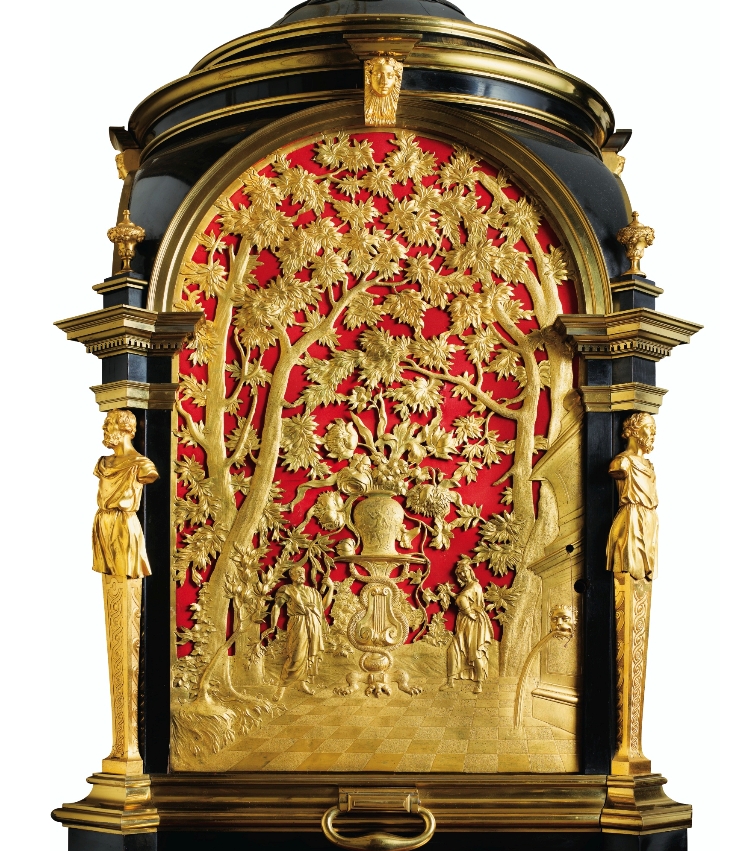Post in preparation.
The Yale Centre for British Art Bust of Alexander Pope.
by Louis Francois
Roubiliac.
redux.
Formerly in the Collection of Joseph Browne, of Bowlish, Shepton Mallet, Somerset and sold in by Auctioneer John Gerard of Litchfield Street London in 1791.
Signed and dated by chisel under sitter's shoulder, proper
right: "Anno Dom. | MDCCXLI. | L.F. Roubiliac | Scit. Ad vivum"
Inscribed, chiseled on front of socle: 'POPE'; on proper
left under sitter's shoulder: 'ALEX. POPE. Nats. LONDINI, | die 8o. junii anno
MDCLXXXVIII. | Obiit in vico Twickenham prope | Urbem, die 8o. maii
MDCCXLIV"
Eyes cut.
See Popes Correspondence.
We know that this bust was in the collection of Joseph Browne of Bowlish, Shepton Mallett and sold in
A catalogue of the intire and valuable museum of that well-known collector, the late Joseph Browne, Esq. of Shepton-Mallet, ... Part I. : Consisting of fine Greek, Roman, Saxon, English, and Anglo-Gallic, coins; proofs, pattern pieces, and curious medals of royal and illustrious personages, by Briot, Blandeau, Ramage, Simon, Rotier, Bower,&c. Also his books and coins and medals, a capital miniature, by Cooper, of the Earl of Southampton, set in gold ; a gold repeating watch, by Mudge and Dutton; rins, &c. Which, ... will be sold by auction, by Mr. Gerard, ... on Wednesday, March 16, 1791, and the three following days, at half after eleven o'clock precisely.
Joseph Browne of Bowlish and the Marble bust of Alexander Pope, by Louis Francois Roubiliac.
The sale of the Joseph Browne Collections in 1791 in two tranches by Auctioneer John Gerard of Litchfield Street, London.
Gerard died July 1793.
Joseph Browne ….. This occurs in the catalogue of the sale by auction in 1791 of the museum of curios, paintings, etc., etc., of Joseph Browne, of Shepton Mallet, clearly a great, important, and interesting sale of a wealthy man. The museum, etc., occupied March 16th and three following days; the china 15th April and following day; paintings, coins, etc., 23rd May and five following days; and 5th June came ancient and modern coins, manuscripts, etc.
The catalogue describes the prints and paintings as — consisting of a remarkably fine and curious collection of prints of the Italian, German, Flemish, Dutch, English, and French schools, comprehending the best works by or after Albert Durer, Goltzius, Elsheimer, Hollar, Rubens, Vandyck, Jordaens, Teniers, Rembrandt, Bergheim, Ostade, Visscher, Walker, Faithorne, Loggan, Vertue, Le Brun, Edelinck, Masson, Balechon, etc., etc.
Together with a few capital pictures and drawings by Rubens, Berghem, W ouvermans, Brughell, Potter, Knyp, Both, Ostade, Ferg, etc.,
and a beautiful marble bust of Alex Pope by Roubiliac.
The catalogue available at Kings College Library - Foyle Special Collections: [Rare books Coll.] Z999 B81
https://discover.libraryhub.jisc.ac.uk/search?ti=Three%20Valuable%20Pieces&rn=21&for=kcl
14. A catalogue of the entire and valuable museum of that well-known collector, the late Joseph Browne, Esq. of Shepton Mallet, Somerset ... Part I. ... will be sold by auction, by Mr. Gerard ... on Wednesday, March 16, 1791,
15. A catalogue of the entire and valuable museum of that well known collector, the late Joseph Browne, Esq. of Shepton Mallet, Somerset ... Part V. ... will be sold by auction, by Mr. Gerard … on Thursday 2d of June 1791.
............................
1762 - Auctioneers Prestage and Hobbs. A Catalogue of a ... Collection of Greek, Roman, Irish and English Coins and Medals [chiefly Belonging to Joseph Browne] ... which Will be Sold by Auction, by Messrs. Prestage and Hobbs ... the 5th of April, 1762. MS. Notes of Prices







































